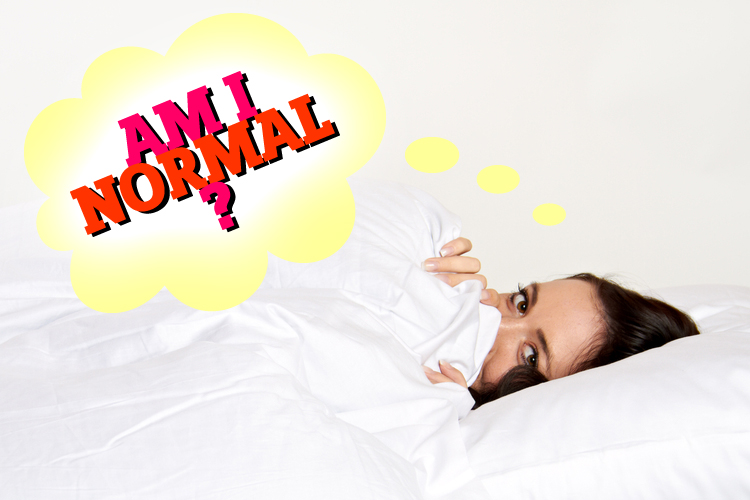I’m a 40-something-year-old woman and I occasionally have orgasms in my sleep. It has been going on for years. I am typically having a non-sexual dream at the time, so I think it’s just physical. No complaints, but any idea what causes this?
At this very moment, thousands of women are dutifully doing their Kegels, investing in high-end vibrators and reading up on how to effectively communicate their needs in bed — all in pursuit of the Big O. Meanwhile, you’re all, “What’s the big deal? I can do that in my sleep! Literally.”
This might seem like extreme orgasmic injustice to all of the climax-challenged readers out there, but you are not as unusual as one might think. In 1953, Alfred Kinsey reported that 37 percent of the women in his sample had experienced dreams that led to orgasm by the time they turned 45. He found that women who had orgasmed in their sleep on average did so three to four times a year, with the incidents peaking among women in their 40s — just like you.
That’s the best data out there on how common it is, and it’s more than half a century old. Luckily, we’ve learned a lot more since then about how a woman can experience “the small death” while asleep. A study in the mid-1980s showed a sleeping woman with all of the physiological signs of orgasm — increased heart rate, breathing and blood flow down there — and, upon waking, she reported having had an orgasm. In “The Science of Orgasm,” Barry Komisaruk and his coauthors explain that these were “not ‘reflexive’ responses to genital stimulation but were generated intrinsically by the brain.” It isn’t called our largest sexual organ for nothing.
What’s especially interesting about your experience is that it happens during “non-sexual” dreams, since most research on the subject focuses on orgasms that follow from erotic dreams. Komisaruk, a psychology professor at Rutgers, tells me this is no reason for concern. “In my book, I raise the issue that ‘orgasm’ may be a general property of the nervous system — really a buildup to a climax followed by a resolution and relaxation.” He has also proposed that there are all sorts of “non-genital orgasms,” including sneezing, yawning and even certain types of epileptic seizures. Ultimately, he says, “If it feels good, it can’t be bad.” (Maybe not a principle one can live by in general, but in this case, it works.)
So, we know nocturnal orgasms are possible, but why does it happen to some women and not others? It was thought by some of Kinsey’s contemporaries that it was a sign of female neuroticism and abnormal, unhealthy psychology — which is reminiscent of the ol’ “female hysteria” diagnosis. But Kinsey, bless him, aptly pointed out the absurdity of assuming that the 80-plus percent of the male population that experiences “wet dreams” was similarly neurotic. He also disproved the common assumption that women’s sleeping climaxes resulted from a lack of action.
More positively, in the mid-1980s, researchers found that climax during sleep was associated with “sexual liberalism” and “positive attitudes toward and knowledge of nocturnal orgasms.” So, who knows, maybe this column will help some ladies experience their first sleepgasm. On that note, sweet dreams.


